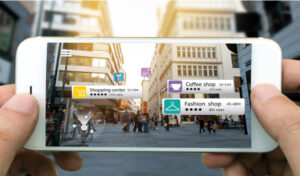It’s no hidden fact. Despite all efforts, the retail industry constantly struggles to keep pace with what exactly it is that their consumers want. Expectations are temperamental and becoming increasingly difficult to live up to.
One conceivable way that can help retailers bridge the gap is by being in a constant state of dialogue with consumers. Fortunately, we live in a world where technology can bring the impossible to life. The world of digital has created conversations between retailers, mall managers and consumers. While traditional media like print and television may still dominate the media landscape, digital marketing is now beginning to bite off a significcant piece of the annual budget. Younger audiences seeking more value, engagement and entertainment from their shopping experience are ensuring that retailers run at their pace of digital adoption. If that weren’t enough, digital marketing is an endless evolving discipline. Not only should retailers learn how to engage their audiences, they also need to better the engagement and keep bettering it, every time.
According to the retail marketing heads, here are the trends that one must incorporate in their digital marketing strategies to stay in tune and a little ahead of the curve.
1Mobile Will Continue To Dominate
The number of mobile users in this country has been on the rise for more than a decade now. There is no stopping this juggernaut from impacting every aspect of every business, including retail.
Internet usage from mobile devices (51.26 percent) overtook usage from desktop devices (48.74 percent) for the first time in October 2016, according to data from StatCounter. The same study also indicated that 78.82 per cent of web traffic in India came from mobile devices.
According to Head-Marketing, Toonz Retail Pvt. Ltd., Kaushik Tanna, “In kids apparel and products, our audience (parents) spends considerable time on mobile for searches, content, products and entertainment. Location based marketing allows retailers to drive traffic through relevant, contextual mobile marketing.”
Head-Marketing, PR and Loyalty, Celio Future Fashion, Abhishek Shetty also believes that mobile is the new way of consuming content.
2Content Is, And Will Continue To Remain, King
‘Content is King!’ is a phrase that makes digital marketers cringe – considered hackneyed and overdone everywhere. And yet, the statement continues to reign true, even today. Retail’s marketing experts believe that content and its marketing will continue to remain relevant for a long time, from building loyalty to building brand.
Says Head-Marketing, Pepe Jeans, Neha Shah, “Content marketing is king. Along with increased focus on upping the customer experience, brands today must also focus on building content that will help maintain customer relationships. This in the long run, will help in providing value to customers. The only challenge in this context is rising above the noise created by other brands. One will have to tailor and create a unique strategy that doesn’t get lost in the chaos.”
Head of Business-E-Commerce, Orra Fine Jewellery Pvt. Ltd., Varun Arora corroborates Neha’s view. He believes, “Content marketing has been in the top 3 trends for the last 3 years. More businesses are now using a strategic approach (40 per cent) toward content, so this is a trend we can expect to see continuing in 2017. We can also expect that there will be more focus on Measuring Content Marketing ROI as the cost and competition within content marketing increases. As we see a growing assimilation of online and offline platforms, content has become a crucial need of the hour. Further, SEO optimization has helped users gain information and insights at a faster rate while being better suited to their search queries.”
CMO, Infiniti Retail Limited (Croma), Ritesh Ghosal on the other hand, speaks of short content marketing as an emerging trend. Long or short, video or written, entertaining or informative or both, content will continue to remain an integral part of all retail digital marketers’ strategies.
3Managing and Leveraging The Omnichannel Experience
Everyone agrees that Omnichannel rightly provides a consistent experience whether customers are shopping online or in a store. The main upshot for most retailers adopting this approach is that it allows them to maximise both digital and physical assets.
CMO, Nexus Malls, Nishank Joshi believes that there is a clear trend towards “offline and online buying synchronisations. Shopping can be started at one place and completed somewhere else, and the use of new tech like Magic Mirrors and VR will make shopping fun, exciting and more convenient.”
According to Head of Business – E-commerce, Orra Fine Jewellery Pvt. Ltd., Varun Arora, “Today, the consumer is already present across different mediums as well as social media channels and therefore Omnichannel marketing has become a very important aspect for growing and improving one’s business.”
Orra’s success with Omnichannel marketing – not just for improving customer acquisition and retention but also in up selling and reduction in stock – is only proof that this trend is getting larger and more dominant.
Head-Marketing, Pepe Jeans, Neha Shah also believes that Omnichannel marketing connects all touch points to get closer to the customer, location based marketing and on site personalisation.
Inorbit Malls, Puneet Verma talks about Inorbit’s foray into the Omnichannel space. “Inorbit is the first shopping centre in the country to offer an Omnichannel experience to its customers on their website and mobile app – the Shop Online feature. With multiple benefits like ‘Shop/Reserve online and Pickup/Buy from Store at the mall’ or the reverse option of ‘Buy at Store at the mall and get home delivery’
4Virtual Reality, Artificial Intelligence and Augmented Reality: No Longer Just Jargon But A Certainity
The research firm, Tractica, predicts that by 2020, over 200 million virtual reality head-mounted displays (HMDs) for consumers will be sold worldwide. Whether India will follow the world and adopt AR/VR at a personal level is debatable, but staring us in the face is the imminent need to start implementing AR/VR if we want to better our experience offering. Some retailers are already ahead of the curve and have begun experimenting with virtual trial rooms and augmented mirrors, which have given them positive outcomes.
Senior Manager Marketing, Unique Estates Development Co. Ltd, Gaurav Balani says, “All tech giants are telling us virtual/ augmented reality is the future of marketing. With interactive ads, 3D product demos and more personalised messages, users can almost reach out and touch the products, while sitting at their home. Virtual retail is still at its early age but will significantly impact the retail industry in the coming year.”
Jermina Menon emphasises that AI will impact retail the most. From the use of chatbots to improve the post sales and service experience, to customers using their smartphone to navigate stores, listen to information about products and availability, and pay, AI will be instrumental in completely changing the customer experience both online and offline.
AR, VR and AI will all be critical to bring alive the concept of retail theatre. Sr. Vice President, Marketing, Viviana Mall, Rima Pradhan is confident that VR and AR will merge with the real world and retail will see lot of new innovations in the future.”
5Increasing Impulse Buys On Digital: Social Platforms Will Compete With E-commerce
Consumers love to research and shop on their mobile phones. They would have done a lot of homework before they step into the store.
Social Shopping will be the way to go as large companies like Google and Snapchat are adding the ‘buy’ button and simplifying the transition from mobile shopping to mobile transactions. “Social media already infl uences consumer behaviour, but in 2017 it will become a bigger driver of direct transactions,” predicts Co-founder & CEO, SUMO Heavy, Bart Mroz.
To quote Senior Manager Marketing, Unique Estates Development Co. Ltd., Gaurav Balani, “Instagram recently rolled out a feature that enables brands to tag products; once clicked users can go to the brand’s website and initiate a purchase. Facebook introduced the Shop-tab in 2015 and since then, they have revealed features that will boost e-commerce on their platform, for instance, the product price and merchant name visible below your daily posts. In 2017, social media platforms will give a tough competition to e-commerce websites.”












